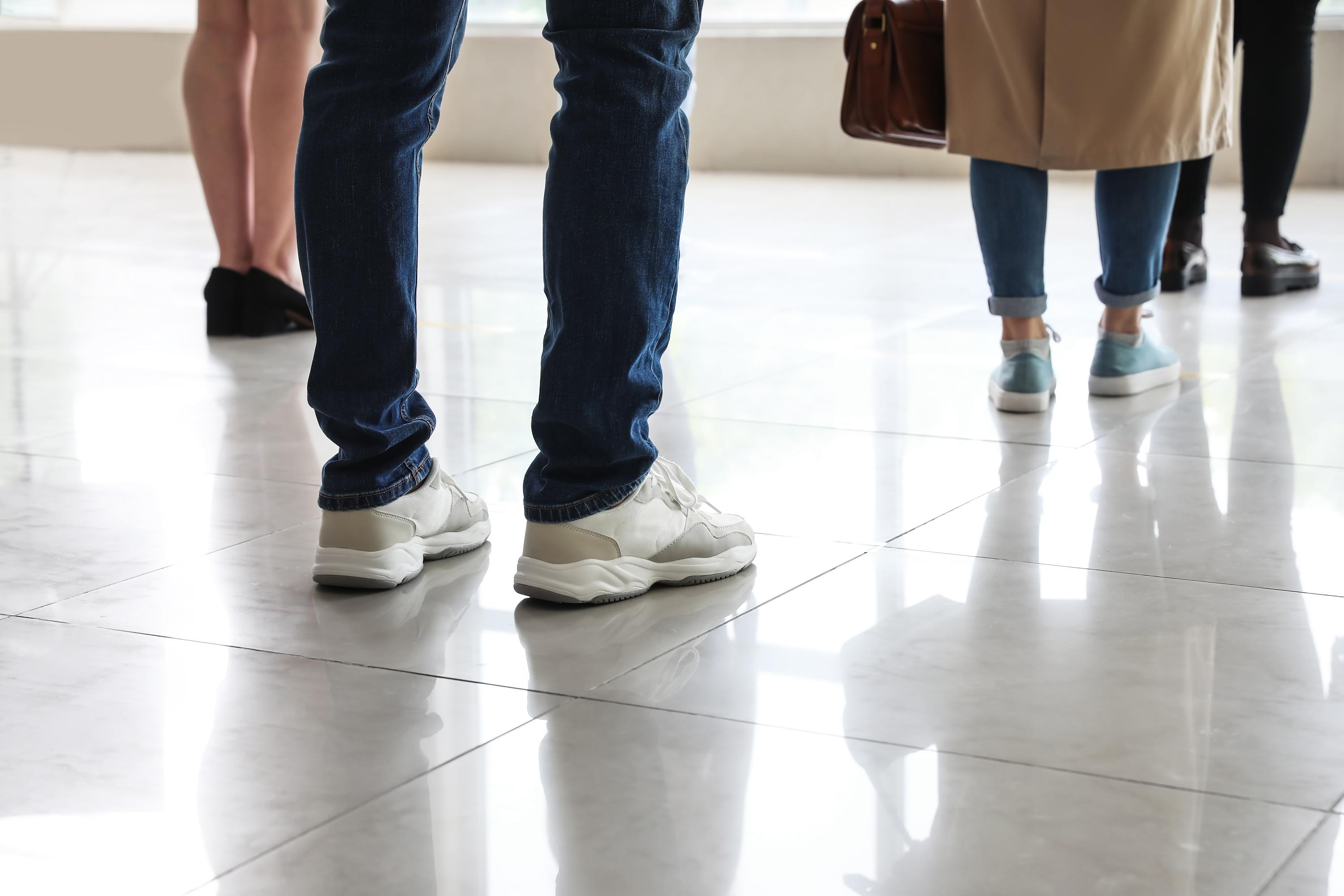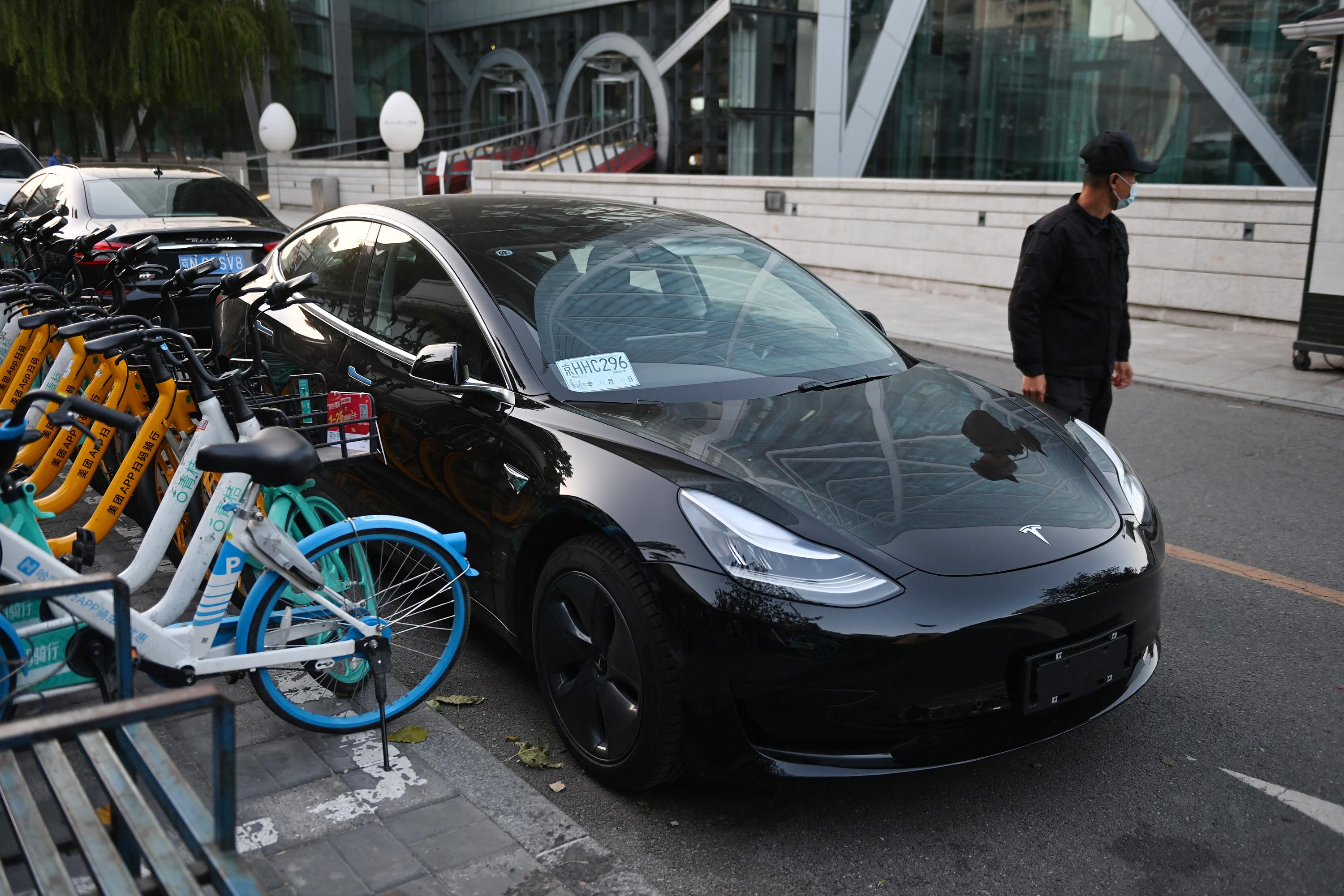Almost four years after the start of the pandemic, barrier gestures are still firmly anchored in people's minds. Among them, social distancing, which invited us to stay one meter away from other people. In any case in France... Because elsewhere in the world, sometimes very different distances have been adopted. Would viruses travel more or less far depending on the country?
In a recent study published in Plos One by researchers from the Jacques Monod Institute, in Paris, and the University of Montpellier, compared distancing practices in more than 190 countries during the first wave (2020). They found that 45% of them advocated a distance of one meter, while 49% opted for 1.5 to 2 meters. (The remaining 6% did not specify an exact value). But no country has increased these minimum distances, even when several studies have shown that SARS-Cov-2 could contaminate an individual located more than 2 meters from an infected person. How were these distances chosen, and did this have an influence on the course of the epidemic?
» READ ALSO – Does the coronavirus really spread through speech?
We know that infectious germs from respiratory viruses, such as those of the flu, bronchiolitis and Covid, are transmitted via drops of saliva emitted when we speak, sneeze or cough. “When these droplets fall on the ground or surfaces, we sometimes have to touch them. Although this route of contamination is anecdotal, it was used by health agencies during the Covid pandemic to justify washing hands and surfaces,” underlines Antoine Flahault, professor of public health at the University of Geneva and director from the Institute of Global Health. These same spittle can encounter during their flight the entrance doors to our body (eyes, nostrils, mouth); they fall towards the ground within a radius of one meter, the WHO has therefore recommended this distance since the 1950s. But during the Covid-19 pandemic, contamination by aerosols, that is to say via microdroplets of saliva (less than one hundred microns), has established itself as the almost exclusive route of transmission of Covid-19. Lighter than sprays, these microdroplets go further. And each country has opted for very heterogeneous distancing recommendations: in Greece or the United Kingdom, it is 2 meters; in Senegal, 1 meter; in Switzerland 1.5 meters.
But what impact did this choice really have on the progression of the virus? The researchers found that countries that immediately recommended a distance of more than 1 meter from the first wave did not necessarily have less transmission of Covid-19. “Our statistical analyzes showed no correlation to confirm that the choice of a greater distance was associated with lower transmission,” confirms Virginie Courtier-Orgogozo, CNRS research director, who led this study. “The epidemic progression brings so many factors into play that it is utopian, even today, to talk about ideal distance,” says Jean-Michel Pawlotsky, virologist at CHU Henri-Mondor (Créteil). It depends on the quantity of infectious germs that a sick person produces, which varies depending on the phase of infection, but also on the size of the droplets emitted, the outside temperature, the degree of humidity, seasonality, etc.
Keeping your distance from a sick person is not absurd, because it limits the risk of contagion; but the effect would remain modest. “When a sick person leaves a poorly ventilated room, the cloud of droplets continues to float in the air for several minutes or hours,” emphasizes Professor Flahault. However, knowing that we inhale approximately 20 times per minute, if this cloud is contaminated with infectious germs, a non-sick person inhales the virus 20 times per minute spent in the unventilated room. By staying there for an hour, it’s as if we had been exposed to the virus 1,200 times.” Moving 1 or 2 meters away ultimately changes the risk very little.
» READ ALSO - Long Covid: causes, symptoms, treatments... Everything we know today
But scientific data was not the only parameter taken into account in defining the distances to be respected, the researchers noted. Legal, monetary system and cultural practices also had an influence. “Regardless of the pandemic, the closeness between two individuals varies greatly based on relationships, age and especially culture. This cultural signature seems to explain the choice of safety distances,” explains Professor Courtier-Orgogozo. The scientists found that in countries where people are physically closer in the family context, the recommended distances tended to be lower. This is particularly the case for Italy, which has recommended a distance of 1 meter.
An observation which is ultimately “absolutely not” surprising for Professor Pawlotsky. “On the contrary, it is reassuring to see that there is a much more global reflection that is compatible with everyone’s lifestyles.” “The authors rightly point out that providing a precise value to the citizenry makes it easier to understand the message, although the value itself is relatively arbitrary. Today we almost want to say that the further the better, but in the same way that we recommend 5 fruits and vegetables, 10,000 steps per day or 7 hours of sleep, it is easier to refer to a threshold », adds Antoine Flahault.

 Who was Dror Or, the Israeli father who died as a hostage in the hands of Hamas?
Who was Dror Or, the Israeli father who died as a hostage in the hands of Hamas? “Pay in cash”: at his trial, Donald Trump faced with an embarrassing recording
“Pay in cash”: at his trial, Donald Trump faced with an embarrassing recording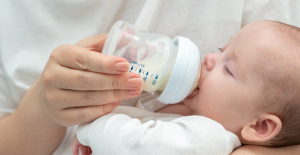 Italy: a grandmother accidentally serves a bottle filled with wine to a baby, he has an alcoholic coma
Italy: a grandmother accidentally serves a bottle filled with wine to a baby, he has an alcoholic coma The mysterious skeletons of Hermann Göring's villa
The mysterious skeletons of Hermann Göring's villa Children born thanks to PMA do not have more cancers than others
Children born thanks to PMA do not have more cancers than others Breast cancer: less than one in two French women follow screening recommendations
Breast cancer: less than one in two French women follow screening recommendations “Dazzling” symptoms, 5,000 deaths per year, non-existent vaccine... What is Lassa fever, a case of which has been identified in Île-de-France?
“Dazzling” symptoms, 5,000 deaths per year, non-existent vaccine... What is Lassa fever, a case of which has been identified in Île-de-France? Sánchez cancels his agenda and considers resigning: "I need to stop and reflect"
Sánchez cancels his agenda and considers resigning: "I need to stop and reflect" After 50 years of existence, “Numbers and Letters” will disappear from the France Télévisions channels
After 50 years of existence, “Numbers and Letters” will disappear from the France Télévisions channels Macron reaffirms his desire not to increase taxes
Macron reaffirms his desire not to increase taxes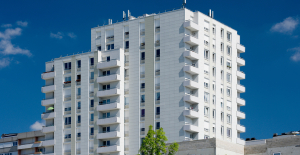 The expulsion of families of delinquents from HLM reinforced in the future Housing law?
The expulsion of families of delinquents from HLM reinforced in the future Housing law?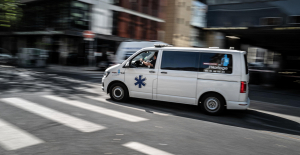 Health carpooling, this source of savings which arouses the ire of patients and taxis
Health carpooling, this source of savings which arouses the ire of patients and taxis The incredible musical juggling of the Basketteuses de Bamako
The incredible musical juggling of the Basketteuses de Bamako Death of Frank Stella, the most spectacular painter-sculptor
Death of Frank Stella, the most spectacular painter-sculptor Film buff's memories of the Champs-Élysées, by Éric Neuhoff
Film buff's memories of the Champs-Élysées, by Éric Neuhoff Madonna thrills Brazilians on Copacabana beach
Madonna thrills Brazilians on Copacabana beach Omoda 7, another Chinese car that could be manufactured in Spain
Omoda 7, another Chinese car that could be manufactured in Spain BYD chooses CA Auto Bank as financial partner in Spain
BYD chooses CA Auto Bank as financial partner in Spain Tesla and Baidu sign key agreement to boost development of autonomous driving
Tesla and Baidu sign key agreement to boost development of autonomous driving Skoda Kodiaq 2024: a 'beast' plug-in hybrid SUV
Skoda Kodiaq 2024: a 'beast' plug-in hybrid SUV The home mortgage firm rises 3.8% in February and the average interest moderates to 3.33%
The home mortgage firm rises 3.8% in February and the average interest moderates to 3.33% This is how housing prices have changed in Spain in the last decade
This is how housing prices have changed in Spain in the last decade The home mortgage firm drops 10% in January and interest soars to 3.46%
The home mortgage firm drops 10% in January and interest soars to 3.46% The jewel of the Rocío de Nagüeles urbanization: a dream villa in Marbella
The jewel of the Rocío de Nagüeles urbanization: a dream villa in Marbella Facing Jordan Bardella, the popularity match turns to Gabriel Attal’s advantage
Facing Jordan Bardella, the popularity match turns to Gabriel Attal’s advantage Europeans: a senior official on the National Rally list
Europeans: a senior official on the National Rally list Blockade of Sciences Po: the right denounces a “drift”, the government charges the rebels
Blockade of Sciences Po: the right denounces a “drift”, the government charges the rebels Even on a mission for NATO, the Charles-de-Gaulle remains under French control, Lecornu responds to Mélenchon
Even on a mission for NATO, the Charles-de-Gaulle remains under French control, Lecornu responds to Mélenchon These French cities that will boycott the World Cup in Qatar
These French cities that will boycott the World Cup in Qatar Paris 2024 Olympics: Mbappé does not “think much” about the Games
Paris 2024 Olympics: Mbappé does not “think much” about the Games Rugby: a young pillar of the Vienna club, in the 3rd division, died in a car accident
Rugby: a young pillar of the Vienna club, in the 3rd division, died in a car accident Premier League: beaten by Liverpool, Tottenham moves away from the Champions League
Premier League: beaten by Liverpool, Tottenham moves away from the Champions League Bundesliga: Leverkusen easily disposes of Frankfurt, 48th consecutive match without defeat
Bundesliga: Leverkusen easily disposes of Frankfurt, 48th consecutive match without defeat